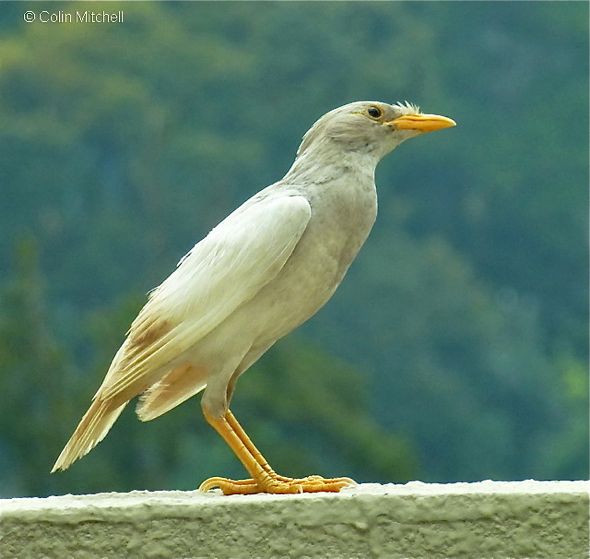Dato’ Dr Amar-Singh HSS submitted an image of a leucistic adult myna photographed by Colin Mitchell. The bird was spotted on the wall at the carpark entrance to the condominium at Mount Kiara in Kuala Lumpur, Malaysia in March 2012. The equipment used was a Panasonic DMC-ZS10 point-and-shoot camera.
According to Colin, “It ignored me in the car while I took a photo through the drivers window. The moment I opened the window it scooted!”
Amar believes that the bird is possibly a Javan Myna (Acridotheres javanicus) in view of the fact that they have overrun Kuala Lumpur. Small possibility of a Jungle Myna (A. fuscus).”










6 Responses
Does anyone know what the prevalence of this condition in various bird species is? Also, what about their lifespans? Can this myna be expected to live for the same duration as the average, “normal” myna?
This is interesting,would love to know the life span of this bird too.
Unusual colours appear to be more common in highly inbred populations of introduced species. I had an interest in albino house crows, and kept a couple as pets. The entire Ceylon House Crow (Corvus splendens) population in Singapore and Malaysia is descended from birds deliberately introduced to Klang in the misguided belief that they eat agricultural pests.
The population now numbers in the tens of thousands. Being heavily inbred, odd-coloured individuals, albino and parti-coloured specimens, do show up with some regularity.
The Javan Mynah is also an introduced species, and I have noticed albino and leucistic specimens.
From my experience, the albinos are not really able to fend for themselves. Their eyesight is weak, and the number I have seen, both my own pets and those owned by friends, tend to be undersized. Most were captured shortly after fledging.
The leucistic individuals (though I have seen mynahs, I have never come across a leucistic crow) appear more capable. But their lack of natural camouflage would put them at a disadvantage with predators.
I have only seen a partially leucistic crow, doing pretty well in the area along with a bald-headed crow. The partial leucistic crow still have enough black on wings to much conceal itself at perch but its pretty whitish at flight, much like a pond heron….
Can these birds be found in Australia?
Definitely not in Australia.